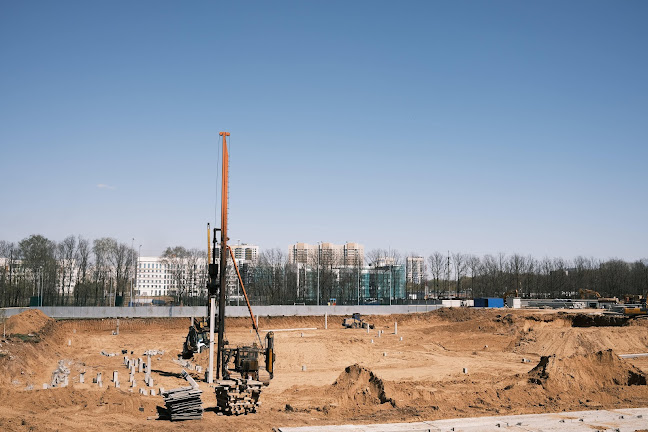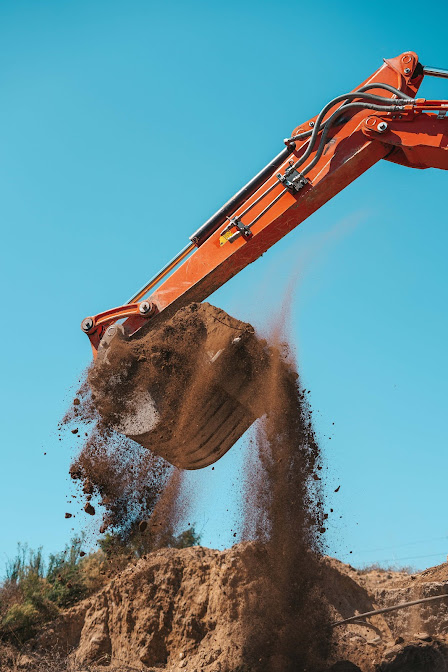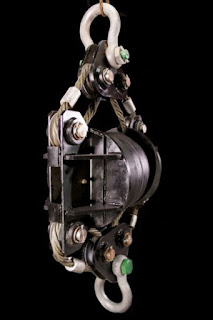For people in the construction business who need to drive piles to create supports for buildings and other structures, diesel-powered pile drivers literally give you the biggest bang for your buck.
If you want to drive a pile into difficult soil terrains, a diesel pile hammer is the most cost-effective when it comes to fuel efficiency, and it produces the greatest impact pressure of all the different types of pile drivers available.
How does it work?
A diesel pile driver consists of a heavyweight on a rail system with a combustion chamber. It can be manually started by raising the ram (weight) with a crane or similar apparatus, then releasing it.
As the ram is raised, fuel is injected into the combustion chamber. When the ram is released, gravity causes it to free-fall downward. After the fuel is injected, the exhaust port closes and the fuel is mixed with air and gets compressed by the falling ram.
When the ram impacts the pile, the air/fuel mixture in the combustion chamber rapidly heats up and ignites, exploding the ram back to the top of the rail system.
While the ram is returning to the top of the apparatus, the exhaust from the combustion process is released as fresh air is drawn into the combustion chamber. The cycle continues until it is manually stopped or the pile driver runs out of fuel.
Diesel pile hammers are self-contained, which means they do not need an external power source to operate them. And while that may make it sound like you can just let it run without supervision until the pile is driven to the desired depth, it’s always a good idea to have someone watching the pile being driven to make sure no unexpected wear is occurring.
Unexpected problems could include if the head of the steel or timber pile starts to crack or split. If this happens, there could either be a problem with that particular pile or an issue with the ram’s hammer shape. In either case, someone should always be prepared to manually halt the combustion process until the problem can be assessed.
Benefits of a diesel pile hammer
When it comes to sheer power, diesel hammers own the market. They are considered to be twice as powerful as hydraulic hammers, which means they can drive piles twice as quickly, given the same number of blows per minute (BPM).
Diesel hammers can also be used on a variety of soil conditions, but are most effective in harder soils that contain fragmented rock, solid rock, or concrete. They can also be used on a variety of pile materials, including steel, timber, and preformed concrete.
As mentioned earlier, while diesel fuel is more expensive than traditional gasoline, diesel impact hammers burn less fuel than other options and can provide a longer cycle life than other types of fuels. And since they are self-contained, they do not require extra equipment that may add other costs to your project.
In the past, diesel hammers have been known to be noisy to operate. Manufacturers have worked hard to help reduce the noise and exhaust on more current models, making them more environmentally friendly.
Perhaps one of the greatest benefits of a diesel hammer is that they tend to be more reliable when it comes to overall service life. They don’t use crankshafts, piston rods, cams, or bearings, which reduce the number of parts that can eventually fail with continuous use.
With fewer parts to maintain, they can be very cost-effective to operate and repairs tend to be easier to make, less complex, and less pricey.
Owning versus renting
Purchasing a new diesel pile hammer will normally run about half the cost of a hydraulic hammer, without taking any of the other cost-saving issues in mind. However, if you only need a pile driver for a short amount of time and don’t use one regularly, it may be more cost-effective to look for diesel pile driver rentals in Missouri.
Renting eliminates the upfront cost of purchasing, and it also purges the costs associated with storage and maintenance. And, if you ever have a problem with a piece of rental equipment, the rental company can fix or replace the damaged tool more quickly than hiring an external repair service or paying the extra cost for that service.
Read More:- Pile Driving Equipment - Everything you need to know | Hydraulic Power Systems












